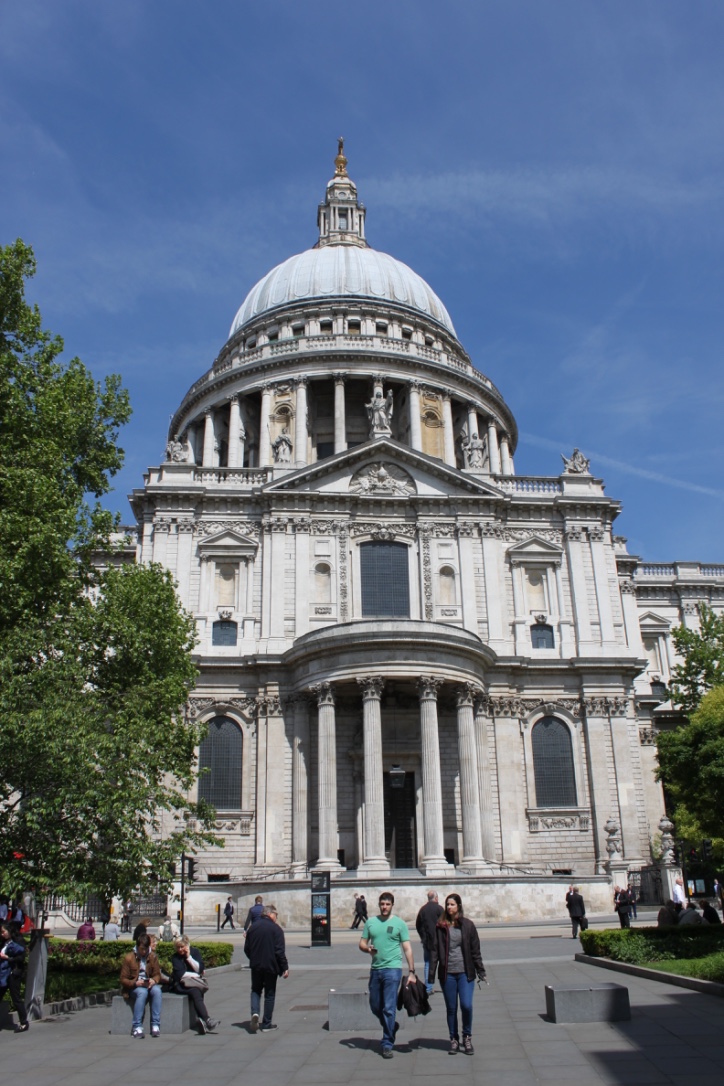Difference between revisions of "English Baroque"
From Londonhua WIKI
| Line 19: | Line 19: | ||
==Characteristics== | ==Characteristics== | ||
<br> | <br> | ||
| − | + | The main elements of English Baroque differ heavily from other traditionally English forms of architectures. The main element of this style was the use of domes. The window sizes in the buildings are increased and classical elements are used. A style with some similar elements such as columns and porticoes is the [[Neoclassical]] style. The style has lots of curves and often features classical figures in rounded alcoves. <ref>Style Guide: Baroque - Victoria and Albert Museum. (2017). Vam.ac.uk. Retrieved 2 June 2017, from http://www.vam.ac.uk/content/articles/s/style-guide-baroque/</ref><ref>Baroque Architecture: Definition, History, Characteristics. (2017). Visual-arts-cork.com. Retrieved 2 June 2017, from http://www.visual-arts-cork.com/history-of-art/baroque-architecture.htm</ref><ref>ROSS, D. (2017). English Baroque Architecture. Britain Express. Retrieved 2 June 2017, from http://www.britainexpress.com/architecture/baroque.htm</ref><ref>ENGLISH BAROQUE. (2017). Www3.canyons.edu. Retrieved 9 June 2017, from http://www3.canyons.edu/Departments/INTD/Faculty/Kavesh/ID%20114/114%20Reading%20Assignments/english_baroque.htm</ref> | |
<br><br> | <br><br> | ||
Latest revision as of 13:32, 9 June 2017
English Baroque Style
 | |
| St. Paul's Cathedral |
|---|
Overview
This article will talk about the English Baroque architectural style and its key characteristics. The style was popularized by John Nash, who designed buildings such as Buckingham Palace and the Cumberland Terrace. [1]
Contents
Background
The English Baroque architectural style started in the late 15th century in England and ended in the mid 16th century. St. Paul's Cathedral is known for this style as the building is home to the first dome to be constructed in Britain.
Characteristics
The main elements of English Baroque differ heavily from other traditionally English forms of architectures. The main element of this style was the use of domes. The window sizes in the buildings are increased and classical elements are used. A style with some similar elements such as columns and porticoes is the Neoclassical style. The style has lots of curves and often features classical figures in rounded alcoves. [2][3][4][5]
Image Gallery
References
- ↑ Neoclassical Architecture (1640-1850). (2017). Visual-arts-cork.com. Retrieved 2 June 2017, from http://www.visual-arts-cork.com/history-of-art/neoclassical-architecture.htm
- ↑ Style Guide: Baroque - Victoria and Albert Museum. (2017). Vam.ac.uk. Retrieved 2 June 2017, from http://www.vam.ac.uk/content/articles/s/style-guide-baroque/
- ↑ Baroque Architecture: Definition, History, Characteristics. (2017). Visual-arts-cork.com. Retrieved 2 June 2017, from http://www.visual-arts-cork.com/history-of-art/baroque-architecture.htm
- ↑ ROSS, D. (2017). English Baroque Architecture. Britain Express. Retrieved 2 June 2017, from http://www.britainexpress.com/architecture/baroque.htm
- ↑ ENGLISH BAROQUE. (2017). Www3.canyons.edu. Retrieved 9 June 2017, from http://www3.canyons.edu/Departments/INTD/Faculty/Kavesh/ID%20114/114%20Reading%20Assignments/english_baroque.htm